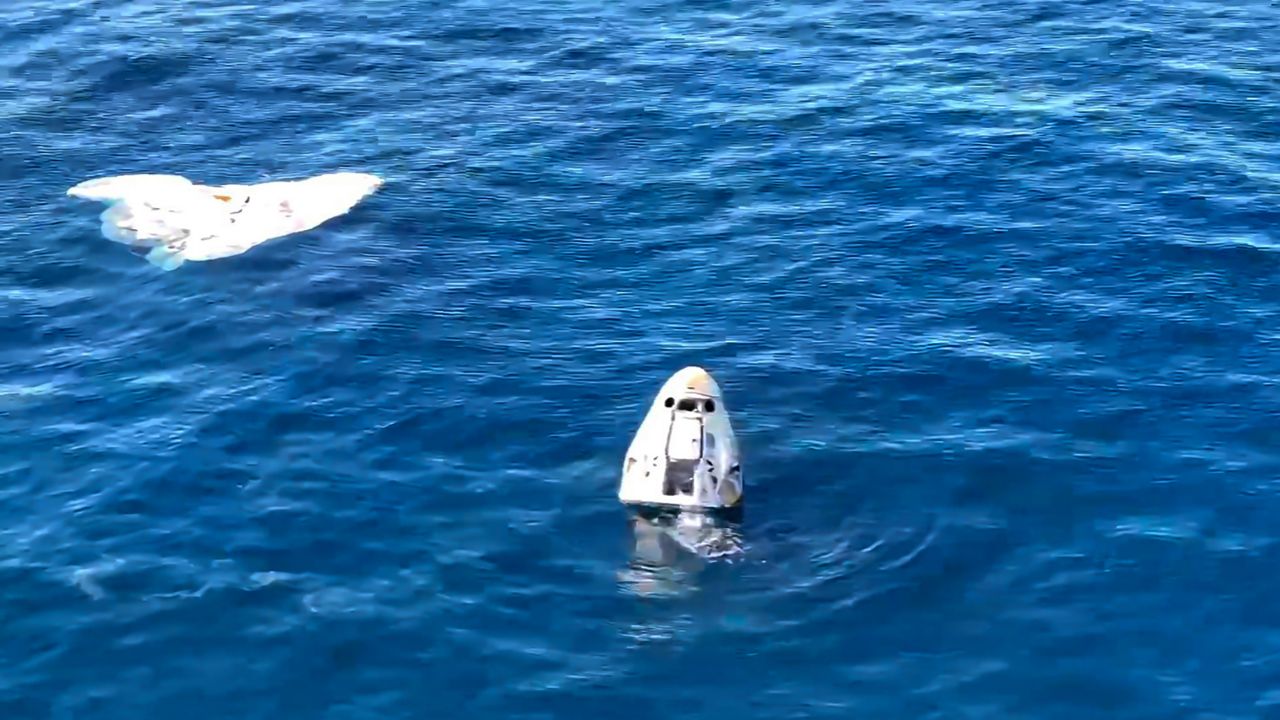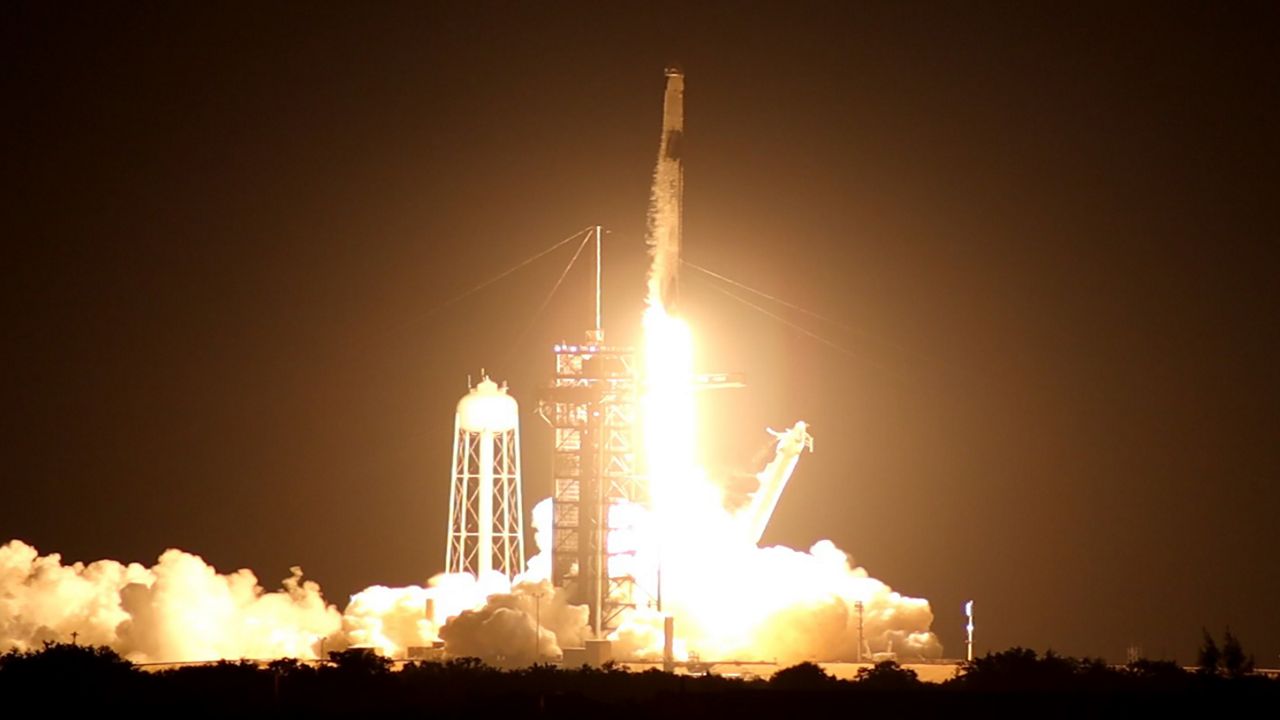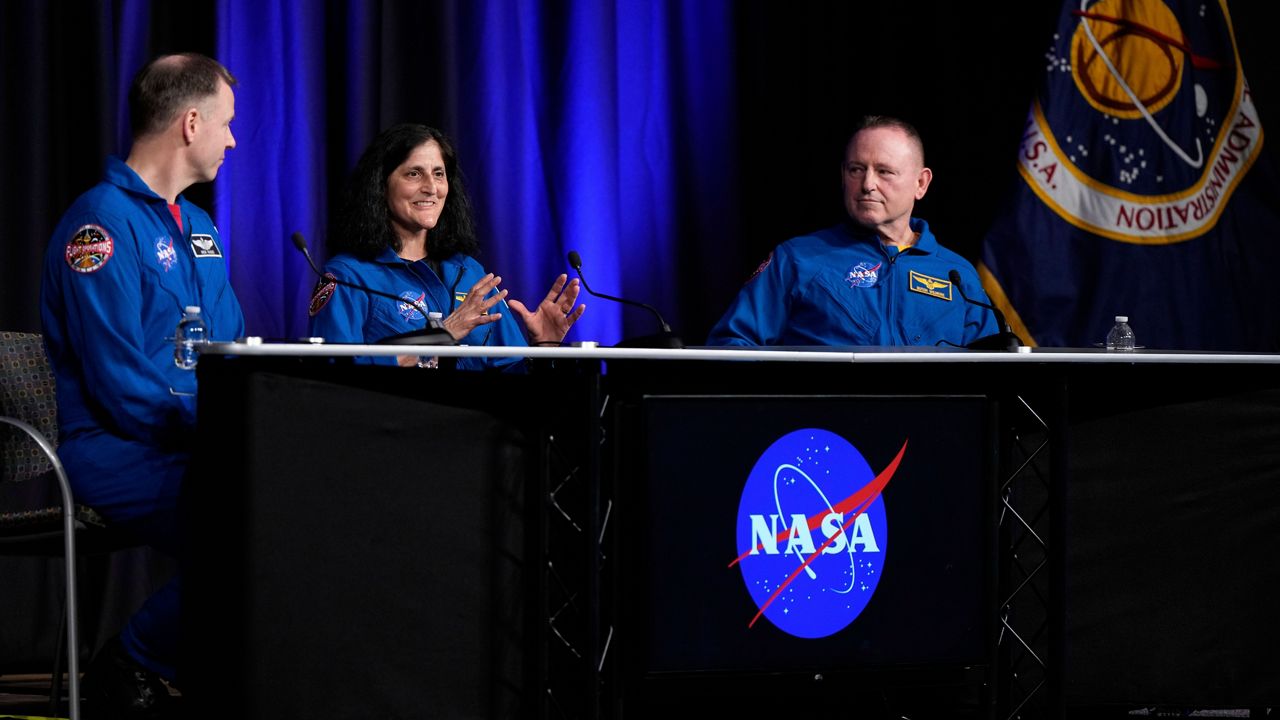NATIONWIDE — SpaceX was able to successfully launch Starship on Thursday morning and while the spacecraft itself was in space for the first time, it was lost while orbiting the planet. Its exact fate is currently unknown after the company stated it was not sending out a signal.
What You Need To Know
- A number of accomplishments were made, stated SpaceX
- It was the longest Starship test so far; about 51 minutes
- The launch happened at the company’s Starbase facility in Boca Chica, Texas
- Scroll down to learn more about the Starship
The liftoff happened at 9:25 a.m. ET with a mixture of cheers from the Starship team heard over SpaceX's live feed and the roar of the Starship's Raptor engines.
The launch took place at SpaceX’s Starbase facility in Boca Chica, Texas.
Collectively known as Starship, the first-stage rocket’s 33 Raptor engines, fueled with thousands of tons of sub-cooled liquid oxygen and liquid methane, lit up as it went into the sky.
The new hot stage separation worked as designed, just like during the second launch attempt in November 2023. While it worked last time, it resulted in the rocket being destroyed. (Please see below for more.)
Starship’s Raptor engines have ignited during hot-staging separation. Super Heavy is executing the flip maneuver pic.twitter.com/T593ACilyD
— SpaceX (@SpaceX) March 14, 2024
The first-stage Super Heavy rocket had a hard-water landing in the Gulf of Mexico, confirmed SpaceX. The damage to it is unknown.
The Starship spacecraft was doing various tests while in orbit, including the opening and closing of the payload door, affectionately known as the "Pez door".
At one point, the Starship was traveling 40 miles (65 kilometers) above the round Earth and moving at 15,973 mph (25,707 kmh).
Starship re-entering Earth's atmosphere. Views through the plasma pic.twitter.com/HEQX4eEHWH
— SpaceX (@SpaceX) March 14, 2024
The plan was for Starship to have a water landing in the Indian Ocean. However, about 51 minutes after liftoff, SpaceX announced on its live feed, "We are making the call now that we have lost ship 28."
The ship's signal back down to the team was lost and SpaceX confirmed that it would take a "little bit of time" to find out what exactly happened to the ship.
SpaceX admitted during its live feed that there was always a chance the Starship and the Super Heavy rocket would not survive their splashdowns.
However, SpaceX considered that the third flight test made some accomplishments, some not seen before:
- All Raptor engines lighting up
- The second time the hot stage separation worked
- The craft's heat shield being intact
- The payload doors worked
- The first time Starship was in space
- The longest Starship test so far
SpaceX stated it will review the data that was collected and use that for the next Starship test.
NASA Administrator Bill Nelson called it a "successful test flight" of the Starship on X.
"Together, we are making great strides through Artemis to return humanity to the Moon—then look onward to Mars," Nelson stated about NASA's and SpaceX's plans.
Later after the launch test, Federal Aviation Administration stated that it will be investigating the Starship flight.
"No public injuries or public property damage have been reported. The FAA is overseeing the SpaceX-led mishap investigation to ensure the company complies with its FAA-approved mishap investigation plan and other regulatory requirements," the FAA stated. "The FAA will be involved in every step of the mishap investigation process and must approve SpaceX’s final report, including any corrective actions."
Getting off the ground
The launch did not go off on time due to wind concerns and giving boats in the splashdown areas time to get out of the way.
The 110-minute launch window was originally set for 8 a.m. ET, but SpaceX pushed the time back to 8:02 a.m. ET. Then SpaceX pushed it to 9:10 a.m. ET, so that boats in the splash down zones had time to move out of the area, stated SpaceX.
Shifting T-0 a few more minutes to give boats time to clear the keep out area, now targeting 8:10 a.m. CT
— SpaceX (@SpaceX) March 14, 2024
On Wednesday afternoon, the California-based company announced that it would be testing its 397-foot-tall stacked Starship for a third time on Thursday from its Starbase facility in Boca Chica, Texas.
SpaceX was waiting for the FAA to grant its approval for the third flight attempt. The company announced last week that it was aiming for Thursday for the launch date.
SpaceX CEO and founder Elon Musk posted on X, stating that "Starship will make life multiplanetary."
About Starship
Starship is where SpaceX’s hopes and dreams are stored. If all goes well, it will take humans back to Earth’s moon and eventually, it will go to Mars.
It is a two-stage heavy lift launch rocket that will be a fully reusable transportation system to carry humans and cargo into space. The rocket is known as the Super Heavy and the spacecraft is called Starship, but collectively, they are known as Starship.
Both the Super Heavy rocket, with its 33 Raptor engines fueled by thousands of tons of sub-cooled liquid oxygen and liquid methane, and the Starship are designed to be reusable.
The Starship is planned to carry 100 crew members and cargo to Earth orbit, the moon and eventually Mars, according to the ship’s user guide.
What to expect for the third-test flight
For the third test, SpaceX stated it built on the two previous launches and planned to showoff a series of demonstrations.
“The third flight test aims to build on what we’ve learned from previous flights while attempting a number of ambitious objectives, including the successful ascent burn of both stages, opening and closing Starship’s payload door, a propellant transfer demonstration during the upper stage’s coast phase, the first ever re-light of a Raptor engine while in space, and a controlled reentry of Starship. It will also fly a new trajectory, with Starship targeted to splashdown in the Indian Ocean,” SpaceX explained.
If things had gone according to plan, this would have been Starship's flight path.
Starship’s flight trajectory for today's test pic.twitter.com/1YJbO1tRxz
— SpaceX (@SpaceX) March 14, 2024
Starship’s flight history
SpaceX’s first launch attempt of Starship happened on April 2023, which saw a series of failures that caused the rocket to explode.
The FAA issued a series of requirements before the California-based company could try again, which included 63 corrective actions.
For the second test in November 2023, SpaceX was forced to blow up Starship.
The new stage separation, called hot stage separation, worked as designed, but it resulted in the Super Heavy rocket’s destruction.
“Following stage separation, Super Heavy initiated its boostback burn, which sends commands to 13 of the vehicle’s 33 Raptor engines to propel the rocket toward its intended landing location. During this burn, several engines began shutting down before one engine failed energetically, quickly cascading to a rapid unscheduled disassembly of the booster,” SpaceX described.
SpaceX believed the likely cause of the booster blowing up was a filter blockage where liquid oxygen fuel goes to the engines.
Minutes later after the hot stage separation, SpaceX could not regain a signal to the Starship spacecraft and the company was forced to destroy it.
“A leak in the aft section of the spacecraft that developed when the liquid oxygen vent was initiated resulted in a combustion event and subsequent fires that led to a loss of communication between the spacecraft’s flight computers. This resulted in a commanded shut down of all six engines prior to completion of the ascent burn, followed by the Autonomous Flight Safety System detecting a mission rule violation and activating the flight termination system, leading to vehicle breakup,” the company stated.
SpaceX stated it has corrected the issues (17 corrective actions) that occurred during the second flight attempt.









